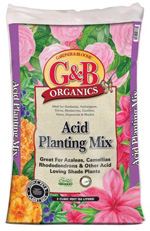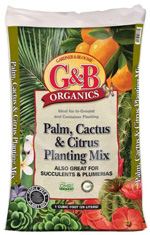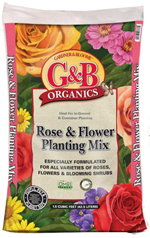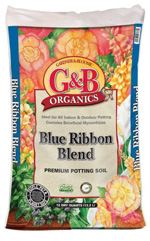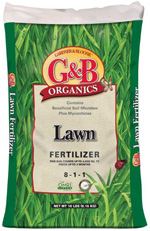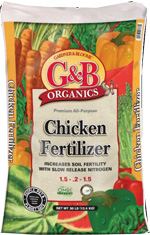|

|
 |
FEATURED QUOTE : "Every spring is the only spring--a perpetual astonishment. " |
 |
 |
|
When most people think of annuals they think about upright varieties for borders and containers. But when planning your annual garden, think about more than just upright plants. There are a number of wonderful trailing varieties that are perfect for providing a splash of color between shrubs, on a hillside or cascading over a rock wall or trailing from a hanging basket. For a hillside, it's hard to beat trailing lantana, with its showy purple and white blooms. A happy plant can reach 3-4 ft across in diameter. If you are looking for a slightly flatter foliage that hugs the ground, consider the mauve-flowering scaevola. It's easy to perk up your landscape by planting patches of million bells (calibrachoa) in spaces between larger shrubs. This colorful annual comes in a variety of bright hot colors including red, yellow, apricot, white, pink, fuchsia, blue, and violet. Another alternative would be verbena, which is available in many colors, flower sizes and flat or mounding foliage. These plants also look great flowing over rock walls or pool edges. For large splashes of color in the landscape, use petunias or ivy geranium. Both grow incredibly fast and come in every color under the sun. You can dress up the edges of a boring-looking vegetable garden with nasturtium, whose orange, red and yellow flowers are also edible. All of the above mentioned plants perform well in hanging baskets but there are a few plants that make great partners with them and are particularly suited for container planting. To add some texture and unique foliage color to your hanging baskets consider using silver dichondra, licorice plant (helichrysum) or parrot's beak (Lotus maculatus). All have silvery grey foliage that provides a great contrast to other plants. While most plants in hanging baskets perform better with a little shade from the afternoon sun, one annual is particularly suited for slightly shadier confines. Use trailing lobelia, which comes in many shades of blue, rose and white. Its cheerful little blossoms are perfect for any container. |

|
Let's take a trip to an area most consider to be the driest desert in the world--the Atacama Desert in northern Chile. Picture a landscape comprised of salt lakes, sand and lava flows. While not extremely hot (highs in the warm season are around 75 degrees), its lack of water is a killer. Evidence suggests that there was not any significant rainfall in this region from 1570 to 1971. It is 50 times drier than Death Valley in California. The landscape is so desolate that it has been compared to that of Mars. Does this sound like a place that can support plant life? You probably see where we're going with this--with all these obstacles, some members of the Cactus family have managed to survive even here! All cacti are native to the Americas, from Canada (not all cacti like hot weather) to Argentina. Europeans first encountered them when they arrived in the New World, late in the 15th century. By the early 1800's, enthusiasts had large collections of cacti and other succulents. Rare plants were sought after and sold for extremely high prices. Cacti suppliers employed collectors to bring back plants from the wild in addition to growing their own specimens. This cactus frenzy lasted until the late 1800's, when the affections of plant fanciers turned to collecting orchids. The Cactus family is a large one. It contains small varieties that grow to only a few inches tall up to gargantuan types that reach fifty feet tall. While most types are extremely drought-tolerant, there are a few that prefer to grow in dripping, tropical rain forests in partial shade. These moisture-loving cacti (Epiphyllum, Rhipsalidopsis and Schlumbergera) grow on trees or rocks and derive their moisture and nutrients primarily from the air and rain. How have cacti been able to adapt so well to adverse conditions? Over time, their stems have evolved into cylinders, pads or joints that store water in times of drought. Their thick, tough skin reduces evaporation. Why do most cacti have so many spines? These are actually modified leaves that protect the plant against browsing animals and help prevent water loss by reducing air flow close to the plant and providing some shade. The properties of the spines (number, color, size, shape and hardness) are often used as a means of identifying one cactus from another. Cactus flowers are usually very showy and come in a wide range of colors. The flowers are produced from areoles, which are around the areas where the spines emerge from the plant. Many cacti also have delicious, edible fruit--and the flesh of a few other types (especially Opuntia) is also used for food. Most cacti are extremely easy to care for. Most types require full sun and well-drained soil. Newly planted cacti should be watered very little, as their roots are subject to rot before they begin actively growing. In about six weeks, when the new roots become active, water thoroughly, then let the soil dry completely before watering again. Reduce (or even discontinue) watering in the fall to allow them to enter their dormant stage. To promote growth and flowers, fertilize monthly in spring and summer; no fertilizer should be given in the fall and winter. Smaller types of cacti are suitable for growing in containers or as additions to rock gardens; it is in this type of setting that their interesting forms and brightly-colored flowers can be best appreciated. Larger types make striking additions to the garden--some of these get very large, however, so make sure to take their eventual size into consideration when placing them in the garden. With their wide array of colors (plant as well as flower), shapes and textures, a garden of cacti can be a dramatic (and easy-care-for) focal point to the garden. Come by and let us help you get started on yours! |
 |
|
Spring is the time to fertilize your permanent plantings. Most ornamental trees, bushes, lawns and ground covers will respond well to fertilizer right now. In good years, abundant spring rains green up the hillsides and bring out wildflowers, gardeners don't have to water as much, and salts are leached out of our soils. On the other hand, heavy rains also wash soluble nutrients, especially nitrogen, down to lower levels--sometimes out of reach of roots. In that case, fertilize the basic landscape with a complete granulated fertilizer high in nitrogen. If you have a straggly ground cover that's never quite covered the ground, a sprinkling of granulated fertilizer as soon as the weather warms will do wonders. Water it in thoroughly or apply it when the weatherman says that it's going to rain. This doesn't mean you should simply fertilize everything in sight. Many plants fall into the broad category of specialty plants because they require special handling. Some specialty plants, including cacti, succulents, and native plants, have little or no need for fertilizer. Others, like azaleas, ferns, roses, fruit trees, and vegetables have unique requirements. Ask one of our knowledgeable garden center experts about the best amendments for your own garden's individual needs. There are other exceptions, too. Old overgrown gardens in rich soil sometimes become virtual jungles, feeding on their own refuse. To fertilize a garden when there's no sign of nitrogen deficiency--like stunted growth, yellow leaves, or disease--may simply contribute to more growth. Growth requires constant pruning, and once invasive plants have become established, you will wish you had never planted them at all. Feeding them would make their growth even more unrestrained. Plant new permanent specimens. Spring is one of only two optimal planting times each year, when gardeners plant almost anything grown in the permanent landscape, such as trees, shrubs, vines, and ground covers. The other is autumn. Planting in fall is traditionally considered to be just a bit better than planting in spring, but after a year or two you'll never know the difference. Now through early summer is the time to look your garden over: objectively look at its strengths and weaknesses; replace troublemakers you don't like; and add permanent specimens where needed. Choose drought-tolerant plants over heavy water users if you can, and be sure to group plants according to their needs for water, sun shade, and soil type. Before purchasing any plant, research its requirements and growth habits. We would be happy to help you select the best plants, amendments, and fertilizers for your specific landscape. You'll be on your way to building a better garden this year! |
 |
|
This is wonderful served with vanilla ice cream! Ingredients:
|
|
Step by Step:
Yield: 8 servings |
 click here for a printer friendly version of this page
click here for a printer friendly version of this page |
Written content © 2004-2014 Garden Partners LLC, or respective authors. All Rights Reserved. Privacy Policy. All written content contained in this site is protected by United States copyright law and may not be reproduced, distributed, transmitted, displayed, published, or broadcast without prior written permission of Garden Partners, LLC. You may not alter or remove any trademark, copyright or other notice from copies of the content. Would you like a newsletter like this for your nursery or garden center? Please feel free to look at what we have to offer and contact us for your garden center marketing solutions. |



